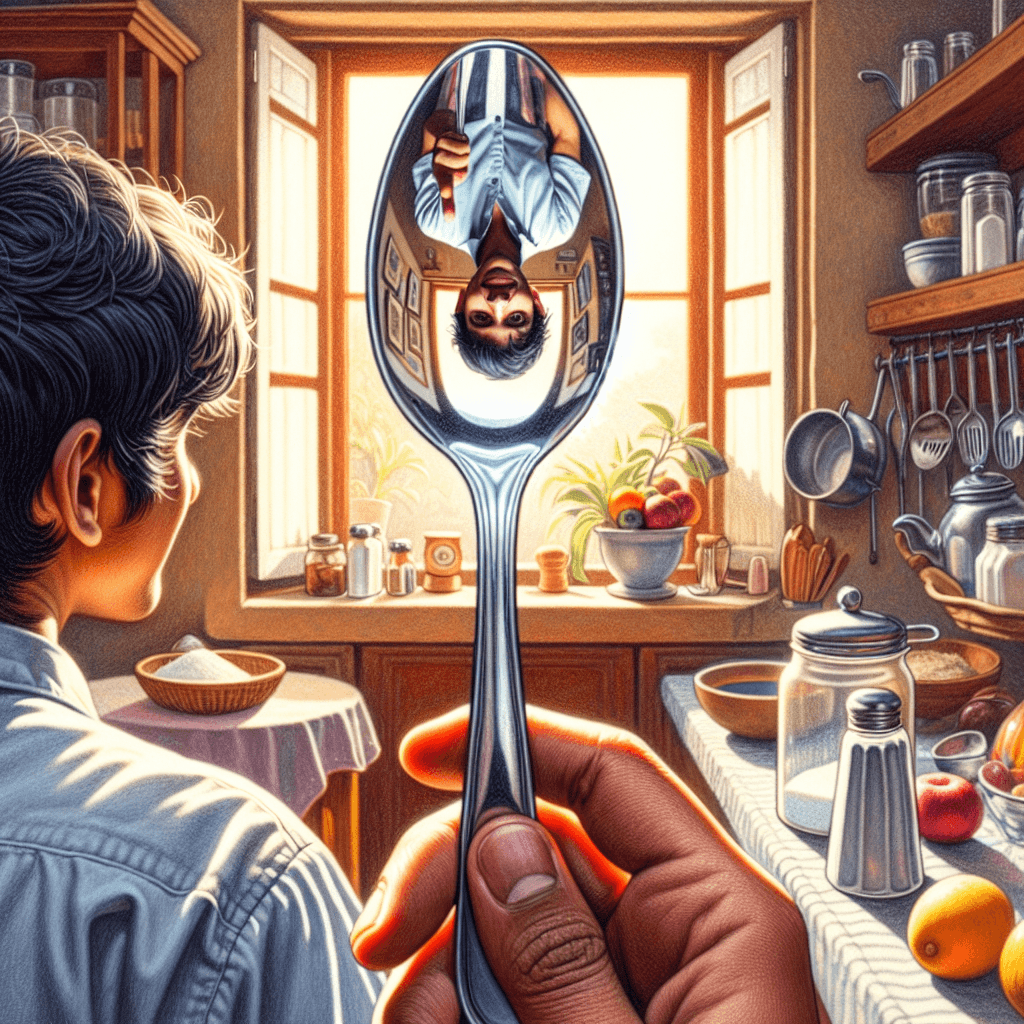Why does your reflection in a spoon appear upside down
It's not a magic trick, it's a fascinating lesson in physics happening right in your kitchen drawer. Discover how a simple curve in a spoon has the power to literally turn your world upside down.


Too Long; Didn't Read
The inside of a spoon is a concave mirror. Its inward curve causes light rays to cross over before they reach your eyes, which flips your reflection upside down.
Flipping Your Perspective: Why Does Your Reflection in a Spoon Appear Upside Down?
Have you ever picked up a shiny spoon and caught a glimpse of yourself, only to see a tiny, upside-down version of your face staring back? It’s a universal experience, a funhouse-mirror effect found in every kitchen drawer. This isn't a strange optical illusion or a trick of the light; it's a fascinating and fundamental principle of physics at play. The simple curve of a spoon acts as a powerful tool, bending light in a way that literally turns your world upside down. This post will delve into the science behind this everyday phenomenon, explaining exactly how a simple piece of cutlery can so dramatically alter your reflection.
The Tale of Two Mirrors: Concave vs. Convex
The secret to the spoon’s reflective magic lies in its shape. A spoon is not a single, simple mirror; it’s two.
- The Inside (Concave): The bowl of the spoon, the part that holds soup, curves inward like a cave. In physics, this is called a concave mirror. This is the side that flips your reflection.
- The Outside (Convex): The back of the spoon bulges outward. This is a convex mirror. If you look at your reflection on this side, you’ll notice that you are right-side up, though you may look a bit stretched or distorted.
For the purpose of this explanation, we will focus on the concave side, as it’s the one responsible for the upside-down image.
The Journey of Light and the Law of Reflection
To understand why the spoon inverts your image, we first need to understand how we see reflections at all. We see objects because light rays travel from a light source (like a lamp or the sun), bounce off an object (like your face), and then travel to our eyes.
When these light rays hit a mirror, they bounce off in a predictable way, governed by the law of reflection. This law states that the angle at which light hits a surface is the same as the angle at which it reflects off it. With a flat mirror, all light rays bounce back at the same angle, creating a perfect, upright replica of the object.
But a spoon isn't flat. Its curve changes everything.
The Focal Point: Where Everything Crosses Over
Because a concave mirror curves inward, it reflects parallel light rays toward a single spot in front of the mirror. This special spot is called the focal point. This is where the magic of inversion happens.
Imagine light rays traveling from your face to the spoon:
- Light rays from the top of your head travel to the top edge of the spoon's bowl. Due to the curve, they are reflected downward, crossing through the focal point.
- Meanwhile, light rays from the bottom of your chin travel to the bottom edge of the spoon's bowl. They are reflected upward, also crossing through that same focal point.
Essentially, the information from the top of your face is sent to the bottom, and the information from the bottom is sent to the top. Because all the light rays cross over at this central focal point before they reach your eyes, the image you see is completely inverted, or upside down.
A Fun Experiment: What Happens When You Get Closer?
Here’s where it gets even more interesting. Try moving the spoon very close to your eye. At a certain point, your reflection will suddenly flip and become right-side up and greatly magnified!
This happens when your eye moves past the focal point and is between it and the spoon. When you are this close, the light rays no longer have a chance to cross before reaching your eye. Your brain then perceives a magnified, virtual image that is upright. This is the exact principle used in makeup mirrors and shaving mirrors, which are concave mirrors designed for you to use up close to get a magnified view.
Conclusion
So, the next time you see your upside-down self in a spoon, you’ll know it’s not a mystery but a clear demonstration of optics. The spoon's inward, concave curve acts like a sophisticated lens, bending and crossing light rays at a focal point to invert the image that reaches your eyes. This simple, everyday object provides a tangible lesson in how light travels and how curved surfaces can manipulate it in predictable ways—the same principles that power everything from massive telescopes exploring distant galaxies to the headlights on your car. It’s a perfect reminder that fascinating science is all around us, even at the dinner table.


